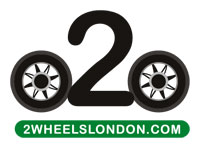Safety first, last and always - Part I
Riding a motorbike safely requires great skill, good judgement, concentration and street smarts.
Sounds simple – but we also know it’s easy to make silly mistakes that can prove deadly. Crashes happen, but what’s so sad is that most can be avoided with just a few simple changes to our riding techniques.
In this short series we’ll look at some of the principal reasons for bike crashes, and the types of roads they occur on, based on statistics from the Department for Transport. Here we look at country roads and junctions.
Where do collisions occur?
The Department for Transport stats show that the most common types of motorcycle crashes are:
• failure to negotiate bends, especially on country roads
• other vehicles pulling out into the path of motorcyclists
• collisions at junctions
• collisions while overtaking
• loss of control, due to poor road surface or high speed
• Inappropriate use of speed.
Bends on country roads
Most of our riding takes place on roads in towns and cities, but the roads we all really love to ride on are country roads.
The problem is not only do we often have less experience on country roads, but they offer different challenges. Country roads demand we apply our skills and knowledge in a different way. We also need to think seriously about our speed; just because the road looks clear and inviting, it doesn’t mean we can necessarily open the throttle.
Some bends are smooth and even, opening up with a good line of sight once you are into them. But others can tighten up dramatically. If you enter a bend at too high a speed you can find yourself with a major problem. If the road gives you clues about how it bends, then use them. You may see the:
• a warning sign at the entrance to the bend, saying the bend is tight
• curvature of white lines
• look for the path of telegraph poles or the line of trees that edge the road… do they bend slowly away, or tightly? If it’s tight, that says the bend could be tight.
But take care and remember things may not be as they first appear. If in any doubt, lose more speed before the bend so you have greater room for manoeuvring safely, without having to brake on the bend itself. Slow in, accelerate out.
Collisions at junctions
Most bike collisions take place at T-junctions, often because car and van drivers fail to give way or stop when we have right of way.
Why? Many drivers have difficulty spotting a bike when it is approaching, even if we’re riding in plain view, in the middle of the lane and wearing high visibility clothing. Car and van drivers can also misjudge the time it takes the rider to arrive at the junction.
As you approach junctions, look for cars and vans emerging. Try to see where the driver’s eyes are pointing and whether the vehicle’s wheels are beginning to turn. Consider how you would deal safely with the vehicle unexpectedly pulling out in front of you.
It may be your right of way but that doesn’t mean you don’t need to take care.
